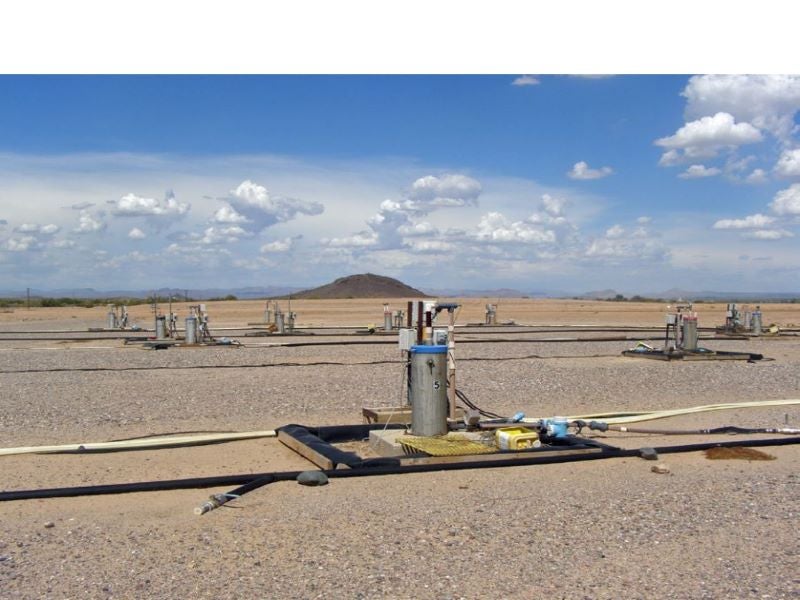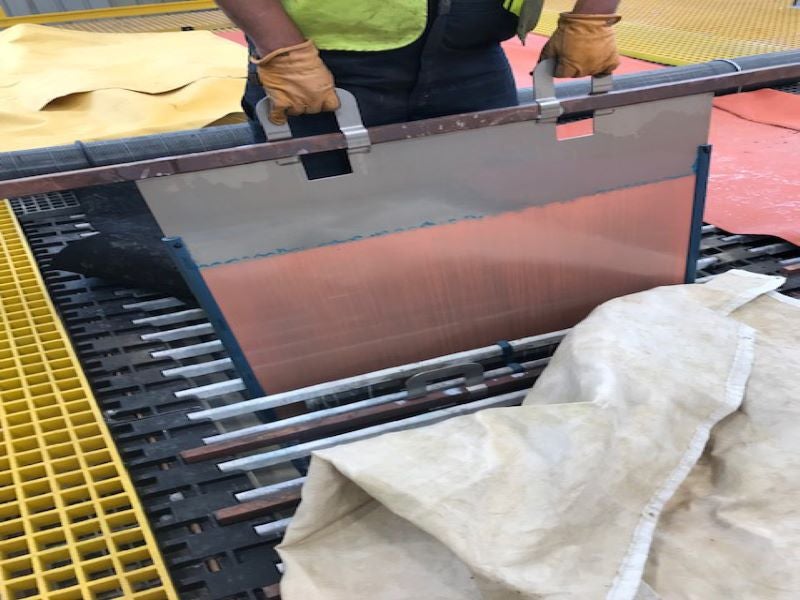The Florence copper project located in Pinal County, Arizona, US is fully owned by Florence Copper, a wholly-owned subsidiary of Taseko Mines.
Discovered by Continental Oil Company (Conoco) in 1970, approximately 50,000t of mineralised quartz monzonite were mined from a single-level, underground mine in 1974.
Magma Copper acquired the property from Conco in 1992 and initiated a pre-feasibility study in January 1993. Magma was acquired by Broken Hill Proprietary Company (BHP) of Australia in January 1996, while Florence Copper acquired the property from BHP in May 2000.
A production test facility (PTF) with 24 wells including four injection wells, nine recovery wells, and 15 groundwater monitoring-related wells were set up at the mine and the first copper was successfully produced in April 2019.
The Florence copper project is estimated to require a capital investment of approximately £154.2m ($204m). Construction activities are anticipated to commence in 2021 and the mine life is estimated to be approximately of 25 years.
Project location and geology
The Florence copper project is located in Pinal County, Arizona within the limits of the town of Florence, approximately 4km north-west from the town centre. The property covers an area of approximately 1,342 acres encompassing two contiguous land parcels.
The Florence deposit occurs on an east-west graben bound horst block with the Party Line fault, a major normal fault occurring on the east side of the deposit which strikes north 35 degrees west and dips 45 to 55 degrees south-west.
The Sidewinder fault occurs near the west side of the project area with additional parallel, north to northwest trending normal faults on the east producing a north to northwest striking graben. The west and north-west regions of the deposit are interbedded by basalt flows.
Mineralisation and reserves
The copper oxide mineralization at the Florence property is primarily hosted in fracture surfaces including chrysocolla and copper-bearing clay minerals that replace feldspar minerals internal in the granodiorite porphyry and quartz monzonite. The thickness of the mineralised zone ranges from 100ft to 1,200ft, with an average thickness of 400ft.
The total probable reserves at the Florence copper project were estimated to be 345 million tonnes (Mt) grading 0.36% copper as of January 2017.
Mining methods
The Florence copper project will use the in-situ copper recovery (ISCR) method involving the injection and recovery wells to pump raffinate, a weak sulfuric acid solution through the mineral deposit.
The raffinate solution is injected into the host deposit through the natural fractures and voids. It will dissolve the copper ore to produce a copper laden pregnant leach solution (PLS). The recovery wells will collect the pregnant leach solution and pump it back to the surface where it is further processed via solvent extraction and electrowinning (SX/EW).
The SX/EW plant will remove copper from the PLS and the remaining raffinate solution will be recirculated to the well field.
Mineral processing
The processing facility is designed for an annual production capacity of approximately 85 million pounds of copper.
The solvent extraction (SX) plant consists of four reverse-flow mixer-settlers and associated facilities. The plant is designed to have a PLS handling capacity of eleven thousand grams per minute (gpm).
Copper extraction is carried out by three mixer-settlers in a series-parallel configuration, transferring copper into an organic solution. The copper is stripped off the loaded organic solution in the fourth mixer-settler and is transferred to the electrowinning plant.
The electrowinning plant consists of two parallel banks of 50 cells that use permanent cathode blank technology. The loaded cathodes are stripped and washed to remove the copper sheets which are then weighed, sampled and bundled for sale.
Infrastructure facilities
The Florence copper project site is accessible from the Hunt Highway, approximately 3.2km west of Highway 79. The Copper Basin Railroad also runs just north of the Hunt Highway near to the project site.
The power supply requirement for the project is being provided by the Arizona Public Service Electric (APS), via a 69kV transmission line at the northwest corner of the project site.
An existing water supply well at the project site will serve as the source for potable water which will undergo treatment prior to consumption.
Contractors involved
The basic engineering contract for the project was awarded to Stantec in October 2019.





